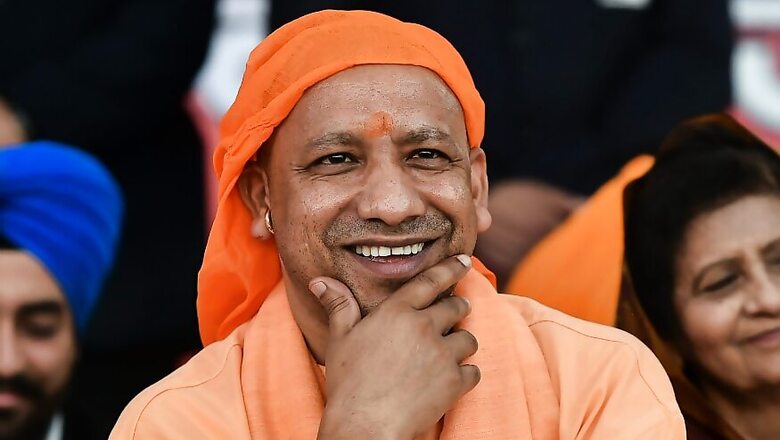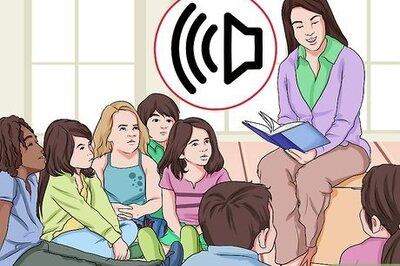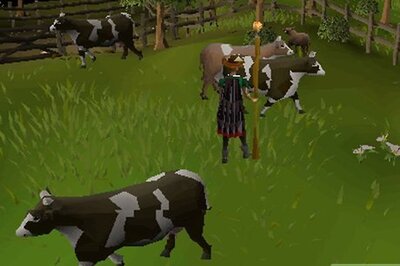
views
After three successive Uttar Pradesh governments, led by Mulayam Singh Yadav, Mayawati and Akhilesh Yadav, yet another chief minister has announced the inclusion of 17 Other Backward Castes under the Scheduled Caste category. And once again, the central government, which has authority on the matter, has objected to the Yogi Adityanath government’s move.
The reason - Article 341(2) of the Indian Constitution which says any amendment to the Scheduled Castes list can be done only by Parliament, and any changes by any institution other than it will be considered ultra vires. Then why have the state governments in UP been so eager to grant SC status to these castes despite knowing limitations in the matter?
Obviously, there is more to the move than meets the eye. To understand it, we need to understand the dynamics of UP politics, which is heavily divided on caste lines, and the voting pattern, which is more often than not decided by the caste factor.
The 17 castes in question are Nishad, Bind, Mallah, Kewat, Kashyap, Bhar, Dhivar, Batham, Machhwara, Prajapati, Rajbhar, Kahar, Kumhar, Dhimar, Manjhi, Turaiha and Gaur. Numerically, these castes constitute close to 14 per cent of the state population. While there are no figures from the official caste census in public domain, unofficial data puts Rajbhars to be around 1.50 per cent, Prajapatis and Kumhars around 2 per cent and Gonds at 0.30 per cent, while the remaining 13 castes fall under the Nishad community and jointly constitute around 10 per cent of the population.
The transfer of these 17 castes would mean the transfer of 14% population to the SC category with benefits of reservation, admissions, scholarship etc. The hope is that the move will be rewarded in the form of votes during Assembly elections.
While the central government has, for now, objected to the move because the due process was not followed, Yogi Adityanath is most likely to succeed where others failed because the BJP is in power both at the state and at the Centre. The inclusion of these 17 castes into the SC category is likely to translate into massive consolidation for the BJP in the 2022 Assembly elections, dealing a big blow to the Samajwadi Party and Bahujan Samaj Party, two parties that cater to the interests of the Backward Castes and Scheduled Castes in the state.
Interestingly, when the move was first mooted by Mulayam Singh Yadav during his tenure (2003-07), BSP chief Mayawati had termed it a ‘political move’. But when she came to power in the state a few years later (2007-2012), realising its benefits, Mayawati wrote to then prime minister Manmohan Singh saying she did not have any objection to the inclusion of the 17 castes in SC list, provided the reservation quota for the SCs was increased proportionately.
Her condition made sense since there were already 66 sub-castes adding up to 21 per cent population in the SC list. With the addition of 17 OBCs, their number would swell to 83, while those of OBCs would decrease to 52 from the existing 79 sub-castes. However, nothing came of it since the Congress government at the Centre did not want BSP to take credit for the move.
The 17 castes have been demanding SC status since pre-Independence. Since OBC reservation came into existence only in 1993 after the implementation of the Mandal Commission recommendations, any caste looking for benefits before that demanded the SC status.
Political motives have been attributed to the UP government move since none of these 17 castes had of late made any loud demands or held demonstrations for SC status. In fact, the move was not even part of the BJP manifesto. Take, for example, the Rajbhars. This backward caste, comprising mostly landless labourers, can influence results in more than 30-40 assembly constituencies of eastern Uttar Pradesh. It is for this very reason that the BJP tried its very best to keep Om Prakash Rajbhar, chief of the Suheldev Bharatiya Samaj Party (SBSP), in good humour till the very last. Now that he has parted ways, giving Rajbhars the SC status seemed to be the only remedy to keep them loyal to the BJP. These days, OP Rabhar is very vocal in his demand for SC status for his community. This move can neutralise him.
The decision is also course correction from the government’s earlier intention to trifurcate the reservation quota of backward castes. The Lok Sabha elections gave BJP and allies 64 seats in UP despite the SP-BSP-RLD Mahagathbandhan. The performance against all odds would not have been possible without the support of entire OBC and SC castes, barring the Yadavs and Jatavs. This may be one of the reasons why the BJP does not want to implement the Justice G Rohini recommendations of splitting the 27 per cent OBC quota into three categories -- 10 per cent for the castes that have received least benefits; 10 per cent for castes that have received some benefits; and 7 per cent quota to those that have received the most benefits of reservation.
The trouble with implementing this formula is that it is likely to antagonise Yadavs, Kurmis, Jats, Sonars etc. since their quota will shrink to just 7 per cent. These castes claim that they have received more benefits of reservation because they are numerically more in comparison to other backward castes. But the bigger trouble for the BJP is that apart from Yadavs, castes like Kurmis, Jats, Gurjars and Kashyaps have been voting en bloc for it since 2014. Why rock the boat then.
It is thus safe to conclude that by giving SC status to these 17 castes, the BJP will hit two birds with one stone. It will not only consolidate 14 per cent backward castes for itself and neutralise any rogue leaders from these castes, but will also save itself from the defection of well-to-do backward castes by not having to trifurcate the OBC reservation quota. At the same time, the BJP will have to ensure that the SC reservation quota is increased in proportion to the strength of additional castes; else it could flare up a major Dalit movement in the country.
(Author is a freelance writer. Views are personal.)


















Comments
0 comment